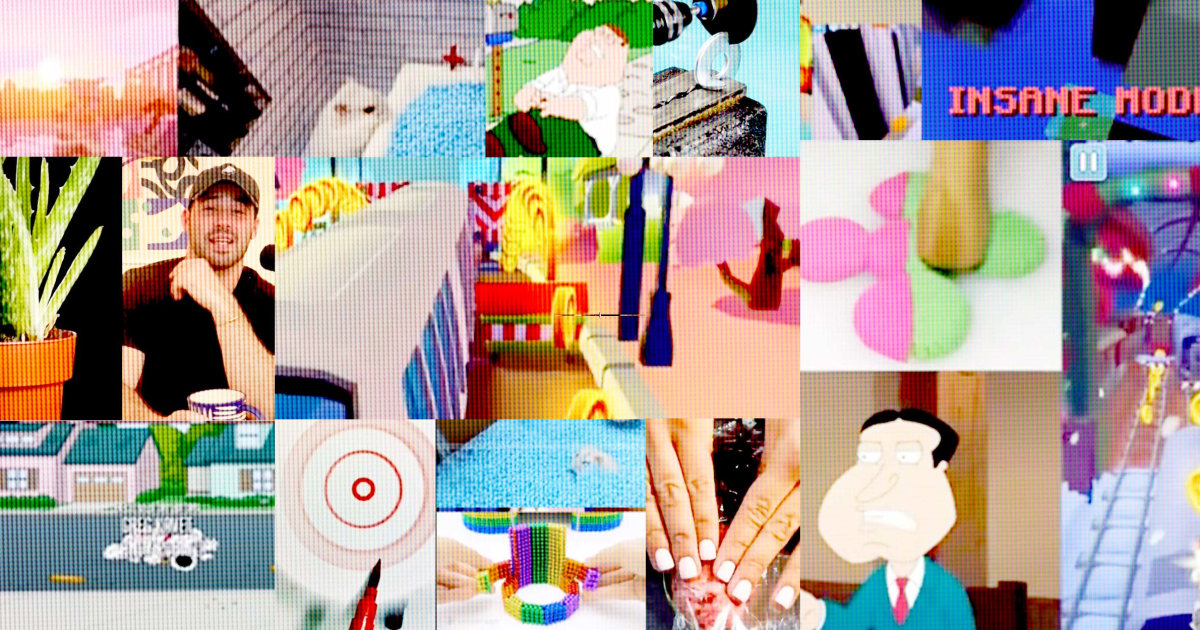It’s content that could only be born from the frenetic flood of TikTok videos.
So-called sludge videos have flourished on the app and other parts of the internet in recent months, offering viewers split-screen views of two, and sometimes even three or four, videos at a time.
Videos are typically compiled from two or more unrelated sources: a popular game component like Subway Surfers, an automated voice reading a confessional story from Reddit, an ASMR clip like a bar of soap getting cut, or a scene from a cartoon or a TV show.
For unsuspecting users, the videos can be upsetting, but for «sludge freaks,» the overstimulating videos offer solace.
“NOT ENOUGH STIMULATION. I NEED SOAP VIDEOS”, a user commented in a sludge content video.
“my mind feels complete”, another wrote.
Experimental editing styles aren’t new to TikTok; #corecore videos, for example, are also combined and seen as a form of poetic storytelling. By comparison, sludge content strays away from the literal meaning and leans instead towards an abstract chaos produced by the mix of different audiovisual content.
Some sludge content videos have neatly split screens, while others feature dizzying mosaics of videos that cover one another. In the latest variation, the videos continue to appear on the screen over the collages.
The origins of the sludge content are unclear, but it is linked to an online tradition of repackaging recognizable bits of the Internet, said Nick Seaver, director of the Center for Science, Technology and Society at Tufts University in Massachusetts.
fried memesfor example, it involved transforming popular images with heavy filters and color saturation, he said.
There is “a history of putting copyrighted content on YouTube but other videos around it so the copyright filter doesn’t kick in,” according to Seaver.
«One thing that you’re clearly seeing here is kind of a fake, people recognize that there are other videos like this out there,» he said.
On the consumer side, part of the appeal of sludge content is its escapist nature. The videos are full of distractions.
“It works as a playful thing, which can take your mind off things and doesn’t require you to dive deep,” said Andreas Schellewald, a doctoral researcher in social media at Goldsmiths, University of London. «You can sit there and watch things unfold in front of your eyes.»
Some users wary of the genre’s rise expressed concern that the muddy content reflected a diminishing attention span among TikTok users and that it promoted «brain rot.»
“TikTok has ruined the average attention span so quickly,” one user Subtitled.
«What’s going on with this?» another creator saying in a video «Is our attention span so short that we have to be distracted from the 30-second video we’re watching by another 30-second video in the video?»
Said speech has also led to jokes that the only way to get someone’s attention in real life (in real life) is to play a video clip from Subway Surfers, a muddy content firm:
«POV: I realize I’m losing your attention during rounds,» one user Subtitled a video that simulated an interaction where he would show a game to get someone to focus on his medical lecture.
Seaver said that while concerns about how social media content affects the brain aren’t unfounded, it’s common for conversations about attention spans to be moralized «to talk about the way people should behave.»
“I don’t think it’s very helpful to point to any new media and say, ‘This is evidence that we’re going down,’” he said. The sludge content “is made by someone for a reason. It is not just a natural phenomenon that tells us something about ourselves.”

